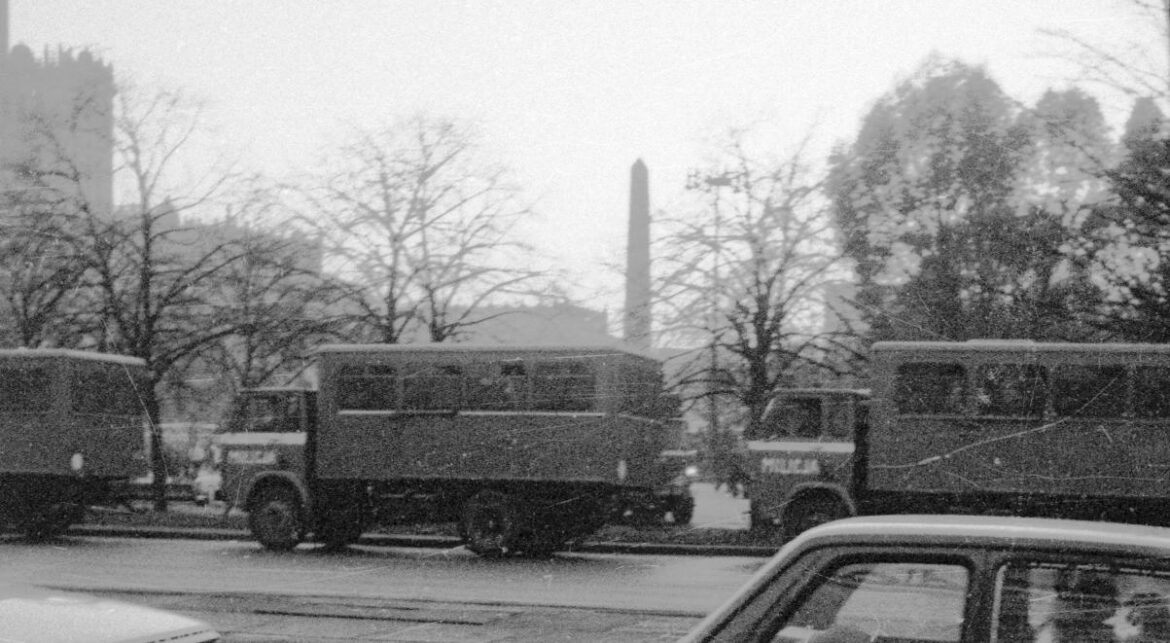The Motorised Reserves of the Citizen’s Militia was a paramilitary formation created in the People’s Republic of Poland in 1956, intended to eliminate ‘collective violations of public order’ and to carry out rescue operations during natural disasters or catastrophes. In reality, they served a political purpose as one of the communist authorities’ organs of repression.
In the 1950s, the number of ZOMO-men, known as ‘Golędzinowcy’, totalled around 6,600, but this limit was raised several times in later years. The colloquial name originated from the first place of accommodation of these functionaries, i.e. Golędzinów (the current district of Warsaw’s Praga-North).
For the first time, the ZOMO officers made their first public appearance on the streets of Polish cities on the day of the parliamentary elections (“no-negation voting”) on 20 January 1957. The aim of this operation was to intimidate Polish society.
The formation took active steps in 1957 near Rzeszów in the village of Latoryż to suppress a demonstration of 400 people demanding the return of their land property to the local parish. At that time, tear gas was used. Batons were probably also used for the first time in 1957 to disperse a crowd of protesting inhabitants of the village of Łętkowice near Proszowice (then in the Kraków Voivodeship).
The greatest challenge for the ZOMO, however, turned out to be the pacification of a strike of Łódź tramway workers on the night of 13 to 14 August 1957 and street fights in Warsaw from 3 to 7 October of the same year with demonstrators disagreeing with the closure of the “Po prostu” editorial office.
In the 1980s, ZOMO was used to disperse opposition demonstrations. The ZOMO were notorious for their brutality and ruthlessness, which is why they were called the “beating heart of the party” at the time. The formation was disbanded on 7 September 1989. It became a symbol of martial law.





